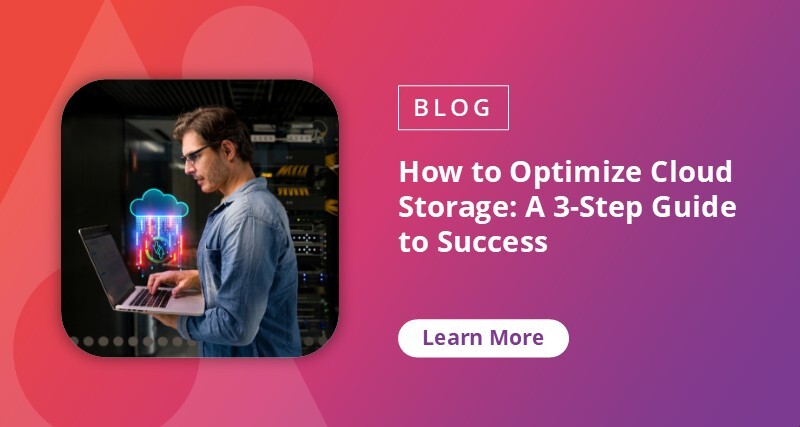The Tech Edge: Tackling Data Hoarding Challenge in the Digital Age

I have a confession: I throw away my children’s artwork minutes after they bring it home. You read that right — as soon as they bring it home, I admire it, praise their creativity, and then straight into the bin it goes. You are welcome to call me a monster, but I call it practical storage management. Believe it or not, this personal habit of mine perfectly illustrates one of the biggest challenges facing organizations today: data hoarding.
My parents’ house is the complete opposite of my approach. It’s filled with every drawing and craft project I ever made as a child – and let me be honest – they’re not good. This is exactly what’s happening in many organizations’ digital spaces right now. We’re all turning into digital versions of my parents’ house, keeping everything “just in case.”
When we have a physical copy of something, it’s much more in our faces, and when we run out of storage space, we are forced to deal with it. It’s not the same when we think about digital information — we can’t see the storage impact, and it’s so easy to keep everything forever. But it’s increasingly causing issues and security concerns for organizations everywhere.
Loryan Strant, solution specialist at Rapid Circle, spoke to us on an episode of The Tech Edge and told us, “We create a file, we save it somewhere else, but we never go back and remove the original one. So, it just accumulates and accumulates over time.”
The Digital House Problem
Let me paint another picture of what this looks like for anyone who creates or stores information (spoiler: that’s all of us!). Imagine a simple PowerPoint presentation you’re preparing for a conference. It has lots of great pictures, maybe some videos and it starts as a 50-megabyte file. Someone makes a copy, tweaks the title, and updates an image, and thanks to autosave – boom! – you now have four versions and a 200-megabyte file. Editing this presentation over the course of the week means we’re taking up more and more space — just for a single document! Multiply this across your organization and, suddenly, your “small” site is consuming terabytes of storage.
In an era where data is often hailed as the new oil or the new currency, many organizations find themselves drowning in a sea of information. Data hoarding is not only a matter of digital clutter, meaning your users can’t quickly and easily find the information they need, but it’s also a cost issue. This cost issue grows worse every time a document is saved!
Loryan adds how we used to take photos with film cameras — remember those 24- or 36-exposure rolls (okay fine, I’m old. You don’t need to rub it in)? Each shot was precious because you had limited opportunities. Now, we snap seven(ty!) nearly identical photos and keep them all. Why? Because storage is cheap and deleting them feels risky. But here’s the thing: this “keep everything” mentality is costing businesses millions.
The Real Cost of Cluttered Data
The impact of data hoarding extends beyond storage costs. According to Gartner, 47% of users can’t find or access the information they need to do their jobs effectively. This inefficiency can lead to productivity loss, potentially missed opportunities, and a significant risk of poor or incorrect decisions.
Here are some practical strategies for tackling data overload:
- Make it a team approach. Turn data decluttering into a collaborative effort. Loryan recounts a successful example of an organization that did it like a Friday afternoon activity, where teams sat in the office, got some snacks and drinks, and worked through reviewing and classifying data.
- Leverage migration to new systems. Use system migrations, like moving to SharePoint, as opportunities to analyze and manage data. Instead of a simple “lift and shift,” organizations can take the time to assess and optimize their content moving forward.
- Analyze and understand your data. You can’t reduce until you understand. Are versions causing the biggest issues? Or maybe it’s a particular file type. By analyzing the data you’re storing, you can make good decisions about managing it.

The Human Factor in Data Management
The data hoarding challenge may be significant, but it can be overcome with the right strategies and ongoing management. While technology is an important tool, human involvement in effective data management is crucial in deciding what data to keep or safely dispose of.
Loryan notes, “The reality is it’s an investment in human time.” However, getting users to engage in these processes can be really challenging. Here are some of his key takeaways for organizations looking to improve data management:
- Regular reviews. Implement regular data review sessions involving team members in the process. This is not a one-time function, the clean-out needs to happen regularly.
- Clear retention policies. Develop and communicate clear data retention policies based on legal and business requirements, such as what data needs to be kept and for how long.
- Leverage technology wisely. Use AI and automation tools to assist in data management, but do not rely on them exclusively.
- User involvement. Involve end users in the data cleaning, where it’s relevant. This is to determine and ensure that valuable information is not lost.
- Continuous education. Consistently educate employees on best practices for data management and what their role is in this program.
Remember, the goal isn’t to delete everything — it’s to keep what matters in a way that makes it accessible and useful. Just like I keep selecting pieces of my children’s art in a proper album (okay, I lied earlier — I don’t bin everything!), your organization needs to find that balance between keeping what’s valuable and clearing out what’s just taking up space.
Looking Ahead: Best Practices for Data Management
As organizations continue to grapple with ever-increasing data volumes, a balanced approach combining technology with human insight is crucial. By addressing data hoarding head-on, businesses and governments can reduce costs and unlock the true value of their information assets, leading to improved efficiency and decision-making. Effective data management is a key differentiator for successful organizations in the digital age.
The future of your organization’s information management doesn’t have to be an overwhelming mountain of digital clutter. Start with these recommendations, and you’ll be surprised at how quickly you can transform your digital workspace from a chaotic digital house into a well-organized, efficient system that actually serves its purpose — helping people find and use the information they need, when they need it.
Check out this episode and more here: The Tech Edge — Ticker.
Alyssa Blackburn is the Director of Records & Information Strategy at AvePoint, where she helps organisations achieve business value from their information. In her role, Alyssa provides records and information consulting services as well as system implementations, allowing customers to optimise the structure of their information to maximize business benefits while meeting data governance and compliance objectives. With 20 years of experience in the information management industry, Alyssa has worked with both public and private sector organisations to deliver guidance for information management success in the digital age. She is responsible for the development of AvePoint’s information management solution, and has been involved with implementing our records management solution with government agencies and commercial clients. Alyssa is actively involved in the information management industry and has spoken at a number of events including at Inforum 2016 in Perth. She has been published in the RIMPA IQ magazine and recently won the 2016 award article of the year for the RIMPA IQ magazine for her article titled, "Why you need to think differently about information management."



